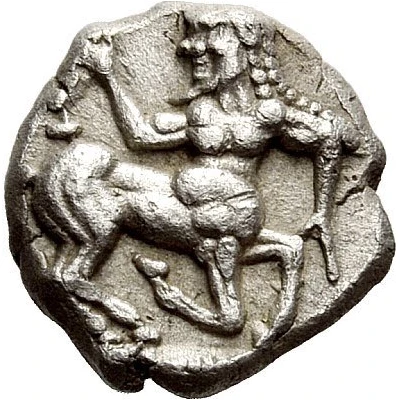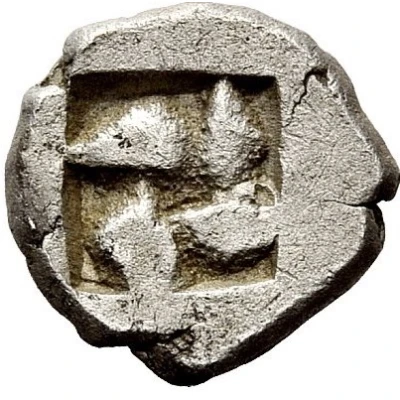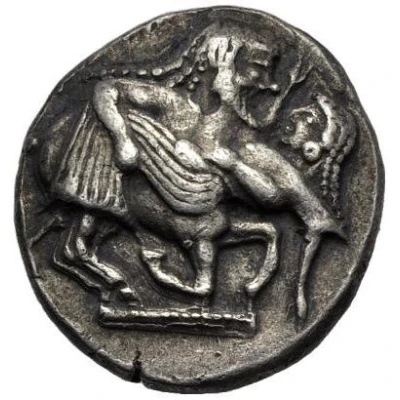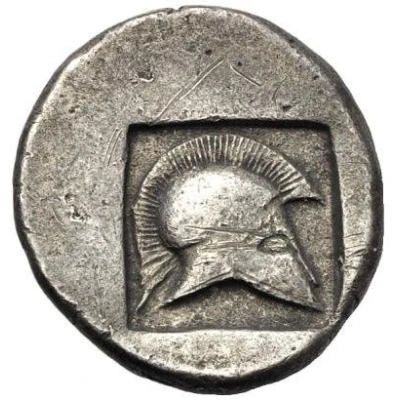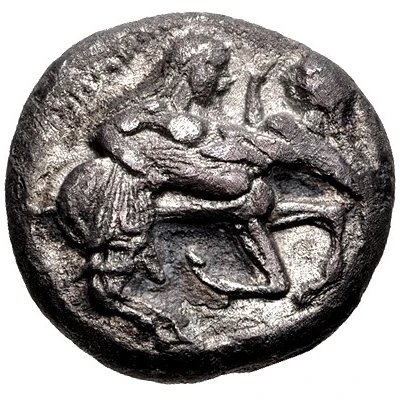
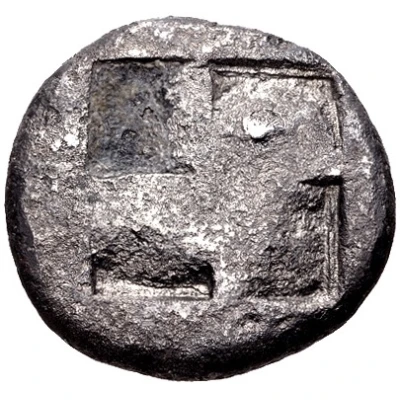

© Classical Numismatic Group, Inc.
Stater 500 BC - 480 BC
| Silver | 8.48 g | 18.5 mm |
| Issuer | Orreskioi (Thraco-macedonian region) |
|---|---|
| Type | Standard circulation coin |
| Years | 500 BC - 480 BC |
| Value | Silver Stater (3) |
| Currency | Drachm |
| Composition | Silver |
| Weight | 8.48 g |
| Diameter | 18.5 mm |
| Shape | Round (irregular) |
| Technique | Hammered, Incuse |
| Demonetized | Yes |
| Updated | 2024-10-10 |
| Numista | N#172009 |
|---|---|
| Rarity index | 100% |
Reverse
Quadripartite incuse square
Comment
The obverse design of this coin depicts a trope in classical mythology, a centaur carrying a struggling nymph. This theme is frequently depicted on coins and is sometimes interpreted as a metaphor of the opposition between the Greeks and the barbarians. Tales of centaurs attacking women can be found throughout the Greek mythological cannon. One of them is the Centauromachy. At the wedding feast of King Pirithous of the Lapiths and his bride Hippodameia, the centaurs, unused to alcohol, get drunk and assault the women and young boys. Eurytion, one of the centaurs, attempts to abduct the bride. The following fight between the centaurs and the Lapiths is depicted on the Temple of Apollo at Bassai.The brutality and wild nature of the centaurs, particularly towards women, is also described in the legend of Herakles. Herakles attempts to cross the large river Evenus with his new wife Deianeira. The centaur Nessos offers to help. He carries Deianeira across the river, but half way across he tries to molest her. Herakles, fires a poison arrow at the centaur. Before he dies, the centaur persuades Deianeira to take some of his blood as a love potion to use on Herakles in the future. Many years later, Deianeira, who was jealous of rumours about Herakles and Iole (daughter of Eurytus), puts the blood on his cloak in an attempt to win him back. After realising that she had poisoned her husband, she kills herself.
• Another example of this type (9.32g, 20mm, Good Extremely Fine):
© Image courtesy of Roma Numismatics
◦ Auctioned by Roma Numismatics Ltd, Auction XVII, 28 March 2019, Lot 402. Estimated at 10,000 GBP, unsold.
◦ Auctioned by Gorny & Mosch Giessener Münzhandlung, Auction 240, 10 October 2016, lot 111.
◦ Auctioned by Helios Numismatik, Auction 7, 12 December 2011, lot 18.
Interesting fact
The Stater coin from Orreskioi (Thraco-macedonian region) was used as a form of currency in the 5th century BC, and its design features a unique blend of Thracian and Macedonian influences. The obverse side of the coin depicts a stylized image of a horse, while the reverse side features an image of a seated figure, possibly a deity or a ruler. The coin's intricate design and craftsmanship reflect the cultural exchange and artistic traditions of the region during that time period.
